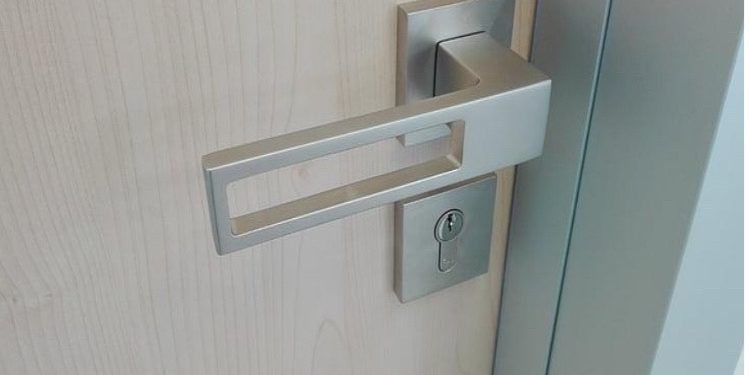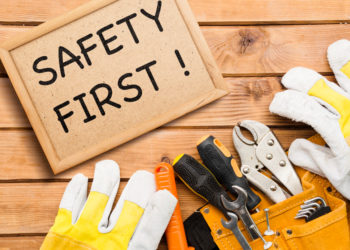When it comes to home remodeling, window handles are probably not the first item that comes to mind. However, they are critical to the operation and aesthetics of your windows. In this detailed tutorial, we’ll delve deep into the world of UPVCwindow handles, discussing the various varieties, benefits, and how to select the best ones for your home. Whether you are renovating your home or simply replacing outdated window handles, this article will supply you with all of the knowledge you require.
Introduction
Have you ever considered how often you use your window handles? Probably not. However, these little components are critical to the security and functionality of your Windows. UPVC window handles are specifically intended to work with UPVC windows, which are noted for their durability and energy efficiency. But why should you worry about the window handle you use? Let us find out.
Why UPVC window do handles matter?
Window handles are not only practical; they also add to the overall appearance of your home. Consider them window jewelry: tiny but striking. The proper window handle can improve the appearance of your window while also providing ease of usage and security. On the other side, an ill-fitting or low-quality handle can be inconvenient to operate and may jeopardize your home’s security.
UPVC window handles are popular due to its durability, ease of maintenance, and cost-effectiveness. Furthermore, they come in a range of shapes and finishes, making it simple to choose the ideal match for your home’s decor.
Types of UPVC Window Handles
Understanding the many varieties of UPVC window handles is the first step towards selecting the best one for your home. The primary types are:
• Inline Espag Handles
• Cranked Handles
• Tilt and turn the handles
• Cockspur Handles
Each of these handles has distinct characteristics and is tailored to specific window types and user requirements. Let usinvestigate each one in depth.
Inline Espag Handles: The Standard Choice
Inline Espag handles are the most prevalent style of UPVCwindow handle. They’re named “inline” because the handle moves in a straight line, making them ideal for windows that open both left and right. This type of handle is frequently used with espagnolette locks, which fasten the window from numerous angles for increased security.
One of the primary benefits of inline Espag handles is their simplicity. They are simple to use and install, making them an attractive option for many homes. They also come in a range of finishes, such as chrome, white, and black, so you can match them to your window frames and interior décor.
Cranked Handles: For Easy Operation
If your windows are difficult to reach, cranked handles could be the perfect solution. Cranked handles, unlike inline handles, are offset, which means they are positioned at an angle. This design makes it easy to operate the window, particularly in small places or behind furniture.
Cranked handles are especially beneficial for top-hung windows, as the handle is located at the bottom. The angled shape requires less effort to open and close the window, making it more user-friendly.
Tilt and Turn Handles: Versatility at its Best
Tilt and turn handles are intended for use with tilt and turn windows, which are renowned for their adaptability. These windows can be slanted inward at the top for ventilation or fully opened for easy cleaning and emergency escape.
The handle is vital in defining the window’s position. A simple handle movement switches the window from tilt to turn mode, providing both utility and convenience. This type of handle is great for modern homes where appearance and functionality are vital.
Cockspur Handles: A Classic Design
Cockspur handles are among the earliest forms of window handles, and they are commonly found in older dwellings. They are meant to attach to a wedge on the window frame, making them simple but effective. Cockspur handles are usually used on single-glazed windows, but they can also be seen on ancient double-glazed units.
One advantage of cockspur handles is their simple form, which allows for effortless operation. They come in a variety of sizes, so measure your existing handles before purchasing replacements.
How to Select the Right UPVC Window Handles
Choosing the appropriate UPVC window handles may appear daunting, but it does not have to be. Here are some things to consider:
Type of Window: The type of window you have will heavily influence the sort of handle you require. For example, tilt and turn windows require a certain handle to function properly.
Ease of Use: Consider who will use the window handles. If they are for a high-traffic location, you may want something simple and easy to use, such as an inline Espag handle.
Aesthetics: Your window handles should match the overall decor of your property. Whether you want a modern or vintage appearance, there is an UPVC door handles to suit.
Security: Choose handles with secure locking mechanisms to protect your property safe. Espagnolette handles, for example, include multi-point locking for increased security.
By taking these considerations into account, you can ensure that you select the best handle for your windows, both functionally and aesthetically.
Installation of UPVC Window Handles: A Step-by-Step Guide
Installing UPVC window handles is a simple task that most homeowners can complete themselves. Here is a step-by-step tutorial to help you get through it:
You will need the following tools:
• Screwdriver
• A measuring tape
• Replacement Handle
• Screws (if not included with the handle)
Remove the old handle
Begin by unscrewing the old handle. Most handles are secured with two screws, one at the top and one at the bottom. After removing the screws, you should be able to lift the handle off.
Measure the spindle
The spindle is the metal rod that links the handle to the locking mechanism located inside the window. Measure the spindle’s length from the base of the handle. This measurement is critical to ensuring your new handle fits properly.
Install the new handle
Place the new handle on the spindle, aligning it with the screw holes. Secure it by tightening the screws. Be careful not to over tighten, since this can strip the screw holes and loosen the handle.
Test the Handle
Once installed, test the handle to confirm it works properly. If it feels stiff or does not lock properly, you may need to readjust the handle or tighten the screws.
Following these methods will allow you to simply replace your old window handles while also improving the functioning and appearance of your windows.
Maintaining Your UPVC Window Handles
Maintenance is essential for ensuring your UPVC window handles last as long as possible. Here are some ways for keeping them in good condition:
Regular Cleaning: To eliminate dirt and grime, wipe off the handles with a clean cloth and mild soap. Avoid using harsh cleaners, which might harm the finish.
Lubrication: Apply a tiny quantity of lubrication to the handle’s moving parts to keep them running smoothly. This is particularly crucial for handles in high-traffic locations.
Check for Wear and Tear: Inspect your handles on a regular basis for signs of wear, such as loose screws or an unstable handle. Addressing these issues at an early stage can help to avoid more serious problems in the future.
Your UPVC window handles can be functional and attractive for many years if they are properly maintained.
Replacing Old Window Handles: What You Should Know
If your window handles are obsolete or no longer operate properly, it may be time to replace them. Here’s what you should know.
Signs You Should Replace Your Handles:
Difficulty Operating: If your handles are stiff or difficult to turn, they may be worn out.
Apparent Damage: Cracks, corrosion, and other apparent damage are strong signs that your handles need replacing.
Security Concerns: If the handle does not lock properly, it poses a security risk that must be remedied promptly.
Choosing the Right Replacement
When replacing your handles, make sure they’re suitable with your windows. To ensure a perfect fit, measure the spindle length and screw whole distance. Consider upgrading to a more secure handle if your existing one isn’t providing appropriate protection.
Replacing old window handles is a simple method to improve the security and operation of your windows without requiring a complete replacement.
Common Issues and How to Address Them
Even the best UPVC window handles can have difficulties from time to time. Here are some frequent concerns and ways to resolve them:
Stiff Handle
A lack of lubrication or a buildup of dirt could be the cause of your handle’s stiffness and difficulty in turning. Try cleaning the handle and reapply lube to see if that addresses the problem.
Loose Handle
A loose handle is typically caused by loose screws. Tighten the screws using a screwdriver, taking care not to over tighten.
Handle will not lock
If your handle does not lock, it could be due to a misalignment of the handle and locking mechanism. Try adjusting the handle or looking for any obstructions in the lock.
Broken handle
If your handle is broken, it will have to be replaced. To replace the handle, follow the instructions in the installation section.
Troubleshooting these frequent difficulties will maintain your UPVC window handles in good working order and prevent the need for costly repairs.
Conclusion
In conclusion, while UPVC window handles are modest, they play an important part in the operation and security of your windows. Understanding the many types of handles and how to care for them is critical when installing new windows, changing old handles, or just keeping existing ones.
There are numerous options available, including inline Espag handles, cranked, tilt and turn, and cockspur handles, each with its own set of benefits. By choosing the right window handles, you may improve your home’s beauty as well as its functionality.
FAQs
What are the most popular varieties of UPVC window handles?
The most common UPVC window handles are inline Espag handles, cranked handles, tilt-and-turn handles, and cockspur handles. Each kind is tailored to various window types and user requirements.
How can I tell whether I need to replace my window handles?
Signs that you should replace your window handles include difficulties working the handle, visual deterioration, and security issues such as the handle not locking properly.
Can I install the UPVC window handles myself?
Yes, most homeowners can install UPVC window handles themselves using simple tools such as a screwdriver and measuring tape.
How do I care for my UPVC window handles?
To keep your UPVC window handles in good condition, clean them on a regular basis, lubricate the moving parts, and inspect for signs of wear and strain. Regular maintenance might help extend the life of your handles.
What can I do if my UPVC window handle is stiff?
If your UPVC window handle is stiff, consider cleaning it and using lubrication on the moving parts. If the problem persists, the handle may require adjustment or replacement.











































































